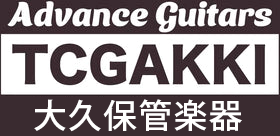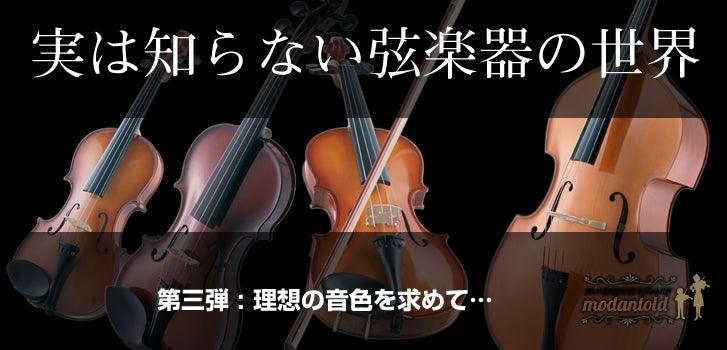
[Introduction
Why are people so fascinated by the sound of the violin? The first time I heard the sound of a violin up close was several years ago... It may be an exaggeration, but I felt as if my mind went blank and my soul was sucked in... It was such a mystical experience that I began to crave to play a sound like that myself.
The history of the violin is long, dating back to its birth 500 years ago, when it first appeared in this world in an almost complete form. The production process and structure are basically the same, but each instrument has its own character and qualities.
Theme of this exhibitionIn search of the ideal tone..."!
We hope you will discover a special stringed instrument that suits you among all the stringed instruments that exist in the world!
If you are at a loss to choose an instrument... if you do not know which one to buy... we have launched this project in the hope of helping you!
We are a store specializing in used musical instruments. Of course, we all have our own preferences, but used and old instruments that have been played for many years produce a wonderful and tasteful tone!
We are also interested in the country where the instrument was born, who played it, and what kind of journey it has been on... Isn't it exciting to think about that? ^_^
We have compiled a list of articles on stringed instruments for each of these categories. We hope it will provide you with clues and opportunities to find your ideal instrument...
History of Cremona, Italy
How did Cremona become a sacred place for violin?

Who made the world's oldest existing violin?
There are many theories, but the most likely candidate is the name of Andrea Amati, the founder of the Amati family.
Stradivari, Guarneri, and Amati are well known as the great old makers of Cremona, Italy...
Andrea Amati's greatness was passed on to his two sons, but Italy was in a period of political and military warfare. The plague raged, and the best Italian craftsmen suffered from the misfortune.
Niccolo Amati, a talented member of the Amati family, became the third generation of the family to carry on the tradition. It is said that the Amati family reached its heyday and prospered during the Niccolò era.
By the time he was 40 years old, Nicolo had surpassed all others in popularity, recognition, and ability. This period and the next 100 years were the heyday of Cremona violin making!
He was famous for having many apprentices and training excellent craftsmen at that time!
Antonio Stradivari, Andrea Guarneri, the founder of the Guarneri family, and many others...
It is said that many craftsmen from all over Europe worked at the Amati workshop, and Niccolo generously shared his skills and knowledge...
As a result, Cremona, which produced such master craftsmen as Stradivari and Garnelli, became a sacred place for violin making.
The secret of the whirlpool and the tone.
The secret of the whirlpools!

The spiral part of the violin is called the "scroll.
Most of the stringed instruments on the market today have the same spiral "scroll" as the old violins.
Sometimes you can find some with a lion's face carved on it...(^O^;)
So..! This whirlpool is a key point to check when choosing an instrument!
If you observe each instrument carefully... hmmm, something is different...
Yes, there are various kinds of beautiful and delicate shapes, rough and powerful scrolls, etc...
It is often said that Stradivari's scrolls are beautiful and careful, while Garneri's scrolls are rugged and powerful.
There are also differences in shape depending on the country of production, such as Italian or French. The size of the swirls, the way they spread out, and the way they are carved are all factors that can be used to judge the quality of a scroll, and an expert can even tell the approximate country of production and age of a scroll just by looking at it! (◎o◎)
Scrolls are the part where the maker's habits are clearly expressed, so it is easy to grasp the individuality and characteristics of a piece, which is also a key point for appraisal.
It is also fun to look at the scrolls of various violins and select an instrument by playing it!
It is a very deep world...
Do the scrolls really affect the tone?
There are many theories, but does the scroll really affect the sound? (Re:)
This is the mysterious part... I don't think it affects the sound in particular... but the scroll is part of the body, so it seems to affect the sound...
Does a subtle difference in construction make a difference in sound quality? ...
But I have the impression that violins with excellent scroll construction look beautiful and the quality of the instrument is high...
Scrolls can be decorative, but there are also instruments that are processed in a way that breaks the symmetry for the sake of acoustics. Hmmm... still full of mysteries...
Stringed instrument, bow story...

Stringed instruments such as the violin, viola, cello, and double bass are classified as rubbed string instruments. The term "stringed instrument" is a general term for instruments that are played by rubbing the strings with a bow. Hmmm... conclusion... you need a bow to play the violin! (^O^)b
About the bow...
A violin bow uses about 160~180 horsehair (tail hair). Furthermore, the price of horsehair varies depending on the place of origin, such as Mongolia, Canada, Italy, etc....
The tone, volume, response, strength, and other characteristics of horsehair are all dependent on its quality, and players can choose the type according to their preferences and playing style. Bow hairs from Italy, which are generally considered to be of high quality, have a good relative balance, are comfortable to play, and have a positive effect on tone quality!
The main raw material for the bow's trunk (stick) is Brazilwood or Fernambuco...but many good quality bows are made of Fernambuco...why?
It is because Fernambuco wood is dense, strong, and moisture resistant, which are the characteristics suitable for stringed instrument bows!
However, Fernambuco is in danger of extinction and is becoming more and more difficult to obtain, which is causing the price of violin bows to skyrocket.
In recent years, carbon bows, which boast outstanding strength and durability, have also become popular, and many people use them for their daily lessons!
Bows are also evolving and new products are being born one after another!
Bows are just as important as the body of the instrument, so it is important to choose a bow with care!
TCGAKKIYou can try bows at the stringed instruments section of the store, so please come and find a great bargain USED bow!
The wood that builds the violin!

The strings are constructed of spruce for the front, maple for the back and sides, and ebony for the fingerboard.
With the exception of adjusters and other parts, the instrument is assembled only with wood, resulting in a beautiful form and high texture!
Naturally, there are different ranks of the same wood...
Well-dried and beautifully grained wood is treated as a high-grade wood and its value is increased. What is a good instrument?
Of course, the quality of the construction, but what makes the difference between a good instrument and a bad one is the wood! Good materials and skilled craftsmanship make an instrument shine!
The backboard of a violin...
The backboards of stringed instruments are mostly made of a single piece of wood (1 piece) or two pieces of wood glued together at the center (2 piece)....
By the way, it is said that one-piece backboards are more rare and valuable... Really?
Generally speaking, one-piece lumber is more expensive than two-piece lumber because it requires twice the area of lumber and it is more difficult to secure lumber than two-piece lumber.
One-ply and two-ply... both have their advantages and disadvantages.
One-ply boards have a higher risk of wood distortion over time, but the vibration rate of the entire backing board is higher, and sound transmission is smoother!
The addition of a fuller element to the overall tone is one of its charms!
The two-ply wood is less prone to distortion due to wood shrinkage, and the symmetrical grain has a unique beauty.
It is difficult to judge the superiority or inferiority...
Compatibility between the instrument and the bow...
Is there any compatibility between the instrument and the bow?

When I first started playing the violin, I didn't understand what was going on...but now I think I understand somewhat.
I have bought and sold several violins, from beginner models to handcrafted ones, and now I am here...
I have tried various bows, but when I compared two violins of almost the same class with the same bow, I could certainly feel the difference in pronunciation and playability depending on the individual violin. The same is true for the bow and the body, and vice versa! Of course, individual differences in the body are fully conceivable, but I believe that the bow definitely has an influence as well!
It is a tremendous path to find a compatible partner...
Postscript

The unknown world of stringed instruments Part 3! This time's theme is "In Search of the Ideal Tone..."! How did you like it?
The world of violins is deep and mysterious! I am sure there are many people who have a hard time choosing the right instrument.
TCGAKKI Stringed Instruments Corner will do our best to help you choose the right violin!
You can even compare instruments in the store! We will guide you to your ideal instrument according to your needs and budget!
We welcome those who are just starting out! Please feel free to contact us anytime! We are happy to work with you andTCGAKKIWe wish you and your friends and family a happy and comfortable life together....

